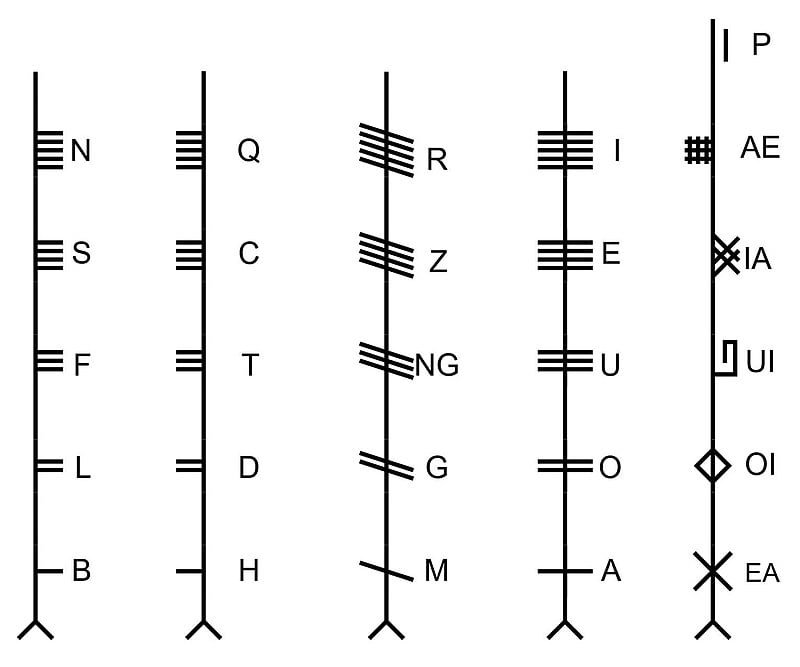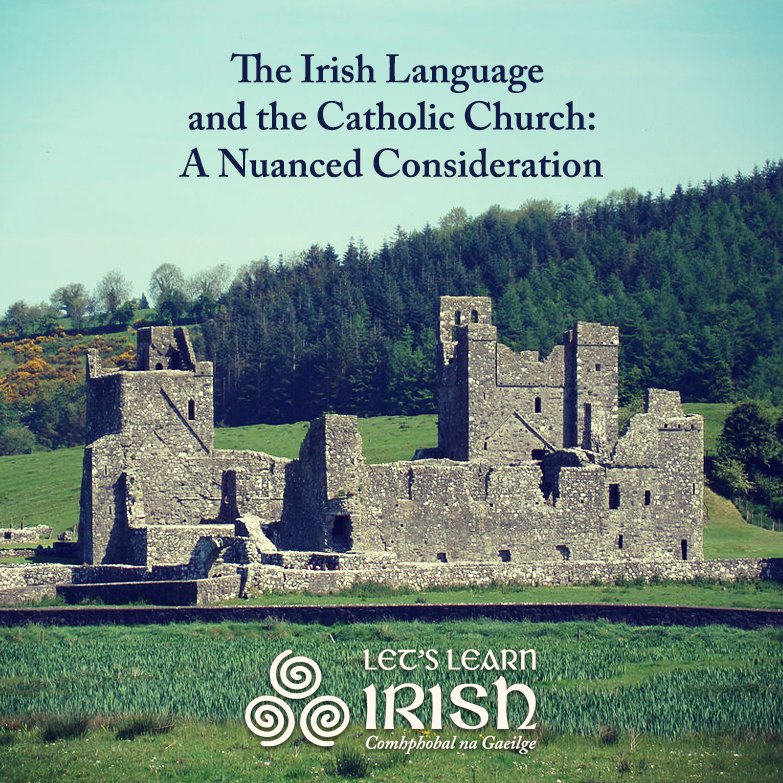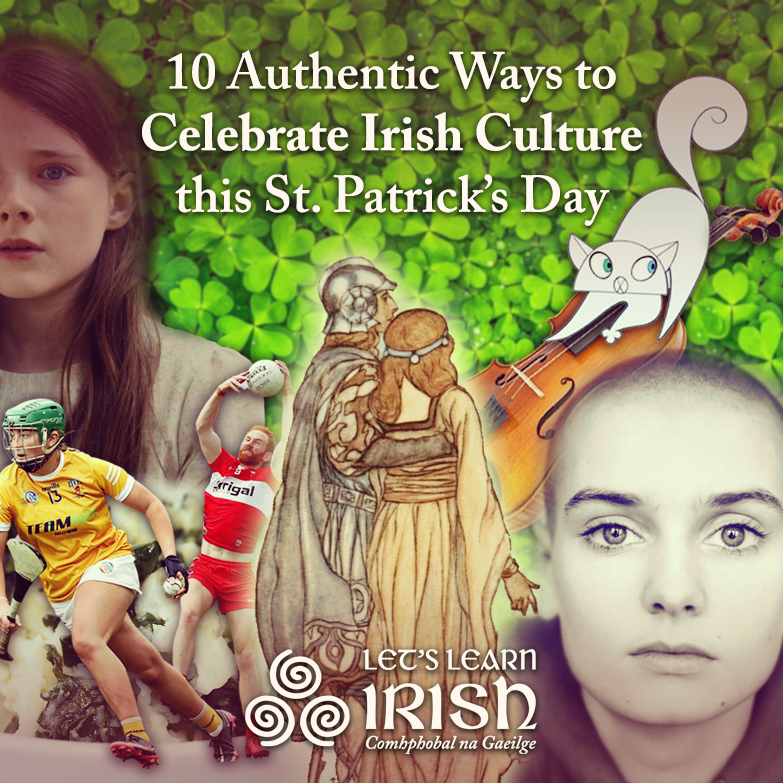The Bardic Schools and Auraicept na n-Éces
 The Bardic Schools were highly developed secular institutions that existed in Ireland in the High Middle Ages. These schools provided what amounted to a university education, and they continued up until the middle of the 17th century. Bardic Schools instructed young scholars in the Irish language, literature, history and Brehon Law, and this long tradition produced many poets, historians and scholars. Fixed schools existed in the 14th century, often located at the home of a chief poet, and utilizing books in their studies. This period also saw the revival of the study of traditional Irish historical lore and genealogies, which involved transcribing Old Irish saga texts, historical tracts, and genealogies from 12th century manuscripts of the pre-reform church schools.
The Bardic Schools were highly developed secular institutions that existed in Ireland in the High Middle Ages. These schools provided what amounted to a university education, and they continued up until the middle of the 17th century. Bardic Schools instructed young scholars in the Irish language, literature, history and Brehon Law, and this long tradition produced many poets, historians and scholars. Fixed schools existed in the 14th century, often located at the home of a chief poet, and utilizing books in their studies. This period also saw the revival of the study of traditional Irish historical lore and genealogies, which involved transcribing Old Irish saga texts, historical tracts, and genealogies from 12th century manuscripts of the pre-reform church schools.
Bardic Poetry
Bardic poetry refers to the writings of a class of poets trained in these schools. Most of the texts preserved from this period are in Middle Irish or in early Modern Irish. This was considered a period of great literary stability due to the formalised literary language that underwent very little change. There survives a syllabus from an Irish Poet’s School dating to around the year 1100, which lists the course of 7 years to become an “Ollamh” (our modern Irish word for “professor”), plus 5 years of postgraduate studies. Amongst a surprisingly long list of texts and poems that First Year students were meant to learn during their course, we find the “Auraicept na n-Éces”…
Auraicept na n-Éces
 Auraicept na n-Éces is an Old Irish text on language and grammar. The words themselves are Old Irish, translating as “the scholars’ primer” (in modern Irish, Uraiceacht na nÉigeas). This book was historically thought to be a 7th century work of Irish grammarians, written by a scholar named Longarad. The main body of the text is believed to date from the mid-7th century, which makes it a uniquely pioneering defence of a vernacular, defending the spoken Irish language over Latin, and predating Dante’s De vulgari eloquentia by 600 years and Chernorizets Hrabar’s O pismeneh by 200 years! We do know that additional material was added up until the earliest surviving copy, in the 12th century. The Auraicept survives in different compilations, in famous manuscripts like the Yellow Book of Lecan (written around 1400) and the Book of Ballymote (both written around 1400).
Auraicept na n-Éces is an Old Irish text on language and grammar. The words themselves are Old Irish, translating as “the scholars’ primer” (in modern Irish, Uraiceacht na nÉigeas). This book was historically thought to be a 7th century work of Irish grammarians, written by a scholar named Longarad. The main body of the text is believed to date from the mid-7th century, which makes it a uniquely pioneering defence of a vernacular, defending the spoken Irish language over Latin, and predating Dante’s De vulgari eloquentia by 600 years and Chernorizets Hrabar’s O pismeneh by 200 years! We do know that additional material was added up until the earliest surviving copy, in the 12th century. The Auraicept survives in different compilations, in famous manuscripts like the Yellow Book of Lecan (written around 1400) and the Book of Ballymote (both written around 1400).
The Study of Ogham
 According to the Auraicept na n-Éces, and other Medieval Irish folklore, Ogham was first invented soon after the fall of the Tower of Babel, along with the Irish language, by the legendary Scythian king, Fenius Farsa. Intriguingly, First Year poets in the Bardic Schools were given a huge load of work, including learning 50 different varieties of Ogham alphabets. To give them a break, the authors of this grammar filled it with word-games, puzzles, playful meanings and all sorts of quirks to start stretching and expanding the new students’ minds. Many of these still remain a mystery to most modern scholars, but it does give us a unique insight into the attitude and training of a social institution – the Bardic Schools – that defined Gaelic Ireland!
According to the Auraicept na n-Éces, and other Medieval Irish folklore, Ogham was first invented soon after the fall of the Tower of Babel, along with the Irish language, by the legendary Scythian king, Fenius Farsa. Intriguingly, First Year poets in the Bardic Schools were given a huge load of work, including learning 50 different varieties of Ogham alphabets. To give them a break, the authors of this grammar filled it with word-games, puzzles, playful meanings and all sorts of quirks to start stretching and expanding the new students’ minds. Many of these still remain a mystery to most modern scholars, but it does give us a unique insight into the attitude and training of a social institution – the Bardic Schools – that defined Gaelic Ireland!
Join the online Irish community for cúrsaí, comhrá & ceardlanna, and follow along on social media @LetsLearnIrish – beidh fáilte romhat!






Spéisiúil! Go raibh maith agat!